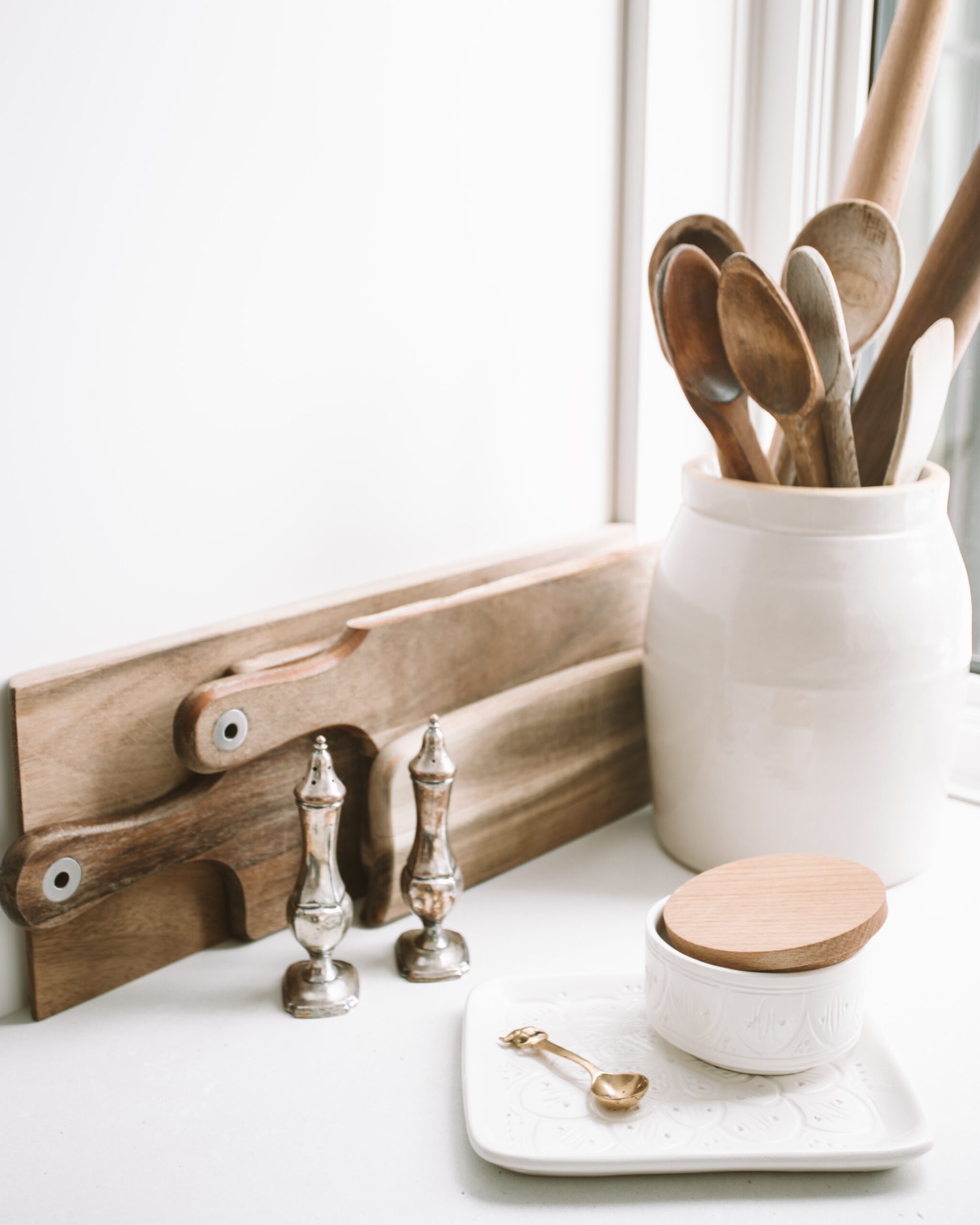
Your wooden cutting board isn’t just a tool but a statement piece in your kitchen, and it should be part of your kitchen maintenance. As a lifestyle expert, I’m here to guide you through the art of cleaning wooden cutting boards, ensuring they remain both hygienic and visually appealing. If properly taken care of, they can last you for years!
Understanding Your Board
First, it’s crucial to know that wooden cutting boards require different care than their plastic counterparts. Wood is porous and can absorb liquids and harbor bacteria if not cleaned correctly. Whether it’s a cherished gift or a staple in your kitchen, proper maintenance is key.
How Often to Clean a Wooden Cutting Board
A wooden cutting board should be cleaned after every use to remove food particles and prevent bacteria growth. For daily light use, a quick wash with warm water and dish soap, followed by thorough drying, is sufficient.
However, if you’ve used the board for raw meat, fish, or poultry, it’s important to clean it more thoroughly, possibly using a mild bleach solution or hydrogen peroxide to disinfect the surface. Additionally, deep cleaning and oiling should be done every month or so, depending on usage, to maintain the wood’s condition and prevent drying and cracking.
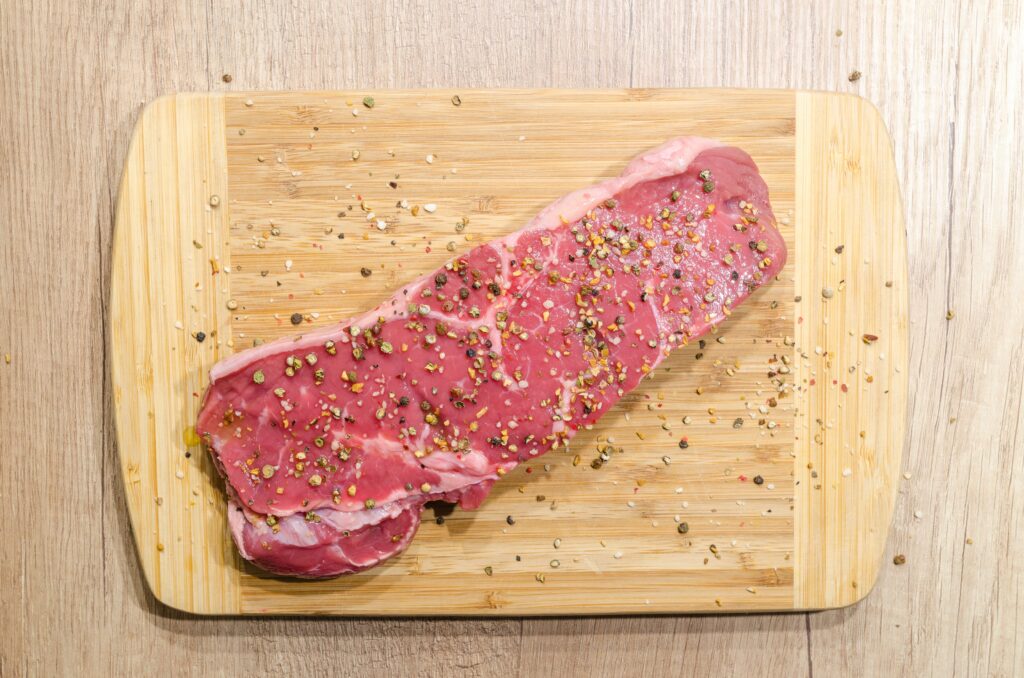
Mistakes To Avoid When Washing A Wooden Cutting Board
When washing a wooden cutting board, avoiding certain mistakes can help prolong its life and maintain its quality. Here are key mistakes to avoid:
- Soaking in Water: Never soak a wooden cutting board in water. Prolonged exposure to water can cause the wood to warp, crack, or split.
- Using Harsh Chemicals: Avoid harsh cleaning chemicals that can damage the wood or leave harmful residues.
- Dishwasher Use: Never put a wooden cutting board in the dishwasher. The intense heat and moisture in a dishwasher can damage the wood.
- Not Cleaning After Every Use: Always clean the board after each use to prevent bacteria buildup and cross-contamination, especially after cutting raw meat.
- Ignoring Deep Cleans: Periodically perform a deep clean, especially if the board starts to develop stains or odors.
- Skipping Oil Treatment: Regularly oiling your wooden cutting board is crucial to prevent it from drying out and cracking. Neglecting this can significantly shorten its lifespan.
- Not Drying Properly: After washing, thoroughly dry the board with a towel and then let it air dry completely in an upright position to ensure even drying and prevent warping.
- Using Too Much Bleach: If using a bleach solution for sanitizing, ensure it is properly diluted (about 1 tablespoon of bleach per gallon of water) to avoid damaging the wood.
- Scrubbing Too Hard: While you need to clean thoroughly, overly aggressive scrubbing can damage the wood’s surface.
- Neglecting Small Cuts and Grooves: Bacteria can hide in knife marks and grooves, so ensure these areas are cleaned well.
By avoiding these common mistakes, you can keep your wooden cutting board in top condition, ensuring it remains safe, functional, and beautiful for years to come.
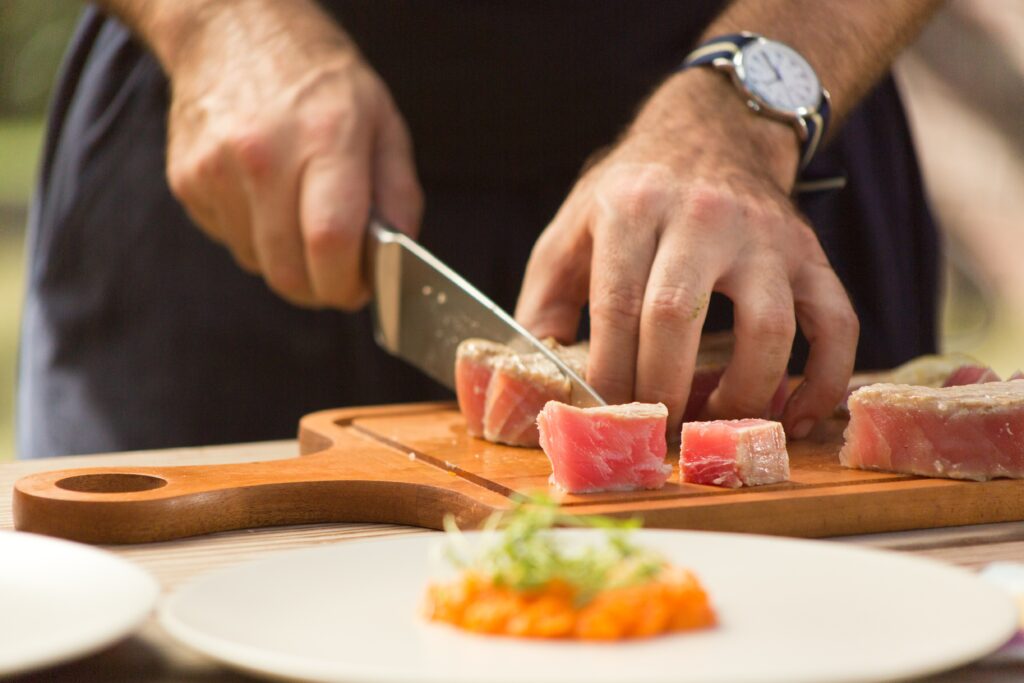
Cleaning a Wood Cutting Board
How to Clean a Wooden Cutting Board With Dishwashing Liquid
Cleaning a wooden cutting board with dishwashing liquid is simple and effective for daily maintenance. Here’s how to do it:
- Scrape Off Food Residue: Use a spatula or bench scraper to remove any leftover food particles from the board.
- Wet the Surface: Rinse the cutting board under warm water. Avoid soaking it, as prolonged exposure to water can damage the wood.
- Apply Dish Soap: Use a mild dishwashing liquid. Apply it directly to the board or use a damp sponge or cloth.
- Scrub Gently: Scrub the board’s surface, sides, and corners. Pay extra attention to areas that came into contact with raw meat or heavily pigmented foods.
- Rinse Thoroughly: After scrubbing, rinse the board under warm running water to remove all soap residue.
- Dry Immediately: Pat the board dry with a clean towel or paper towels. Then, stand it up vertically to air dry completely. This prevents water from pooling and soaking into the wood, which can cause warping or cracking.
Suggested: How to Clean A Cast Iron Skillet
How to Clean a Wooden Cutting Board With Bleach
Cleaning a wooden cutting board with bleach is an effective way to disinfect and remove tough stains. Here’s a safe and simple method:
- Prepare the Bleach Solution: Mix 1 tablespoon of unscented, food-safe bleach with 1 gallon of water. This diluted solution is strong enough to disinfect but gentle enough not to damage the wood.
- Scrub the Board: First, wash the cutting board with warm water and dish soap to remove any food particles. Rinse it thoroughly.
- Apply the Bleach Solution: Dip a clean sponge or cloth into the bleach solution and evenly apply it over the entire surface of the wooden cutting board. Make sure to cover all areas, including the sides.
- Let It Sit: Allow the solution to sit on the board for a few minutes to effectively disinfect and kill any bacteria.
- Rinse Thoroughly: After the bleach has had time to work, rinse the cutting board thoroughly with clean water to remove any remaining bleach solution.
- Dry the Board: Pat the board dry with a clean towel or paper towels. Then, stand it up to air dry completely in a well-ventilated area.
- Condition the Wood: After using bleach, it’s a good idea to oil the board once it’s dry to replenish the wood and prevent it from drying out. Use food-grade mineral oil or a beeswax-based board cream for this.
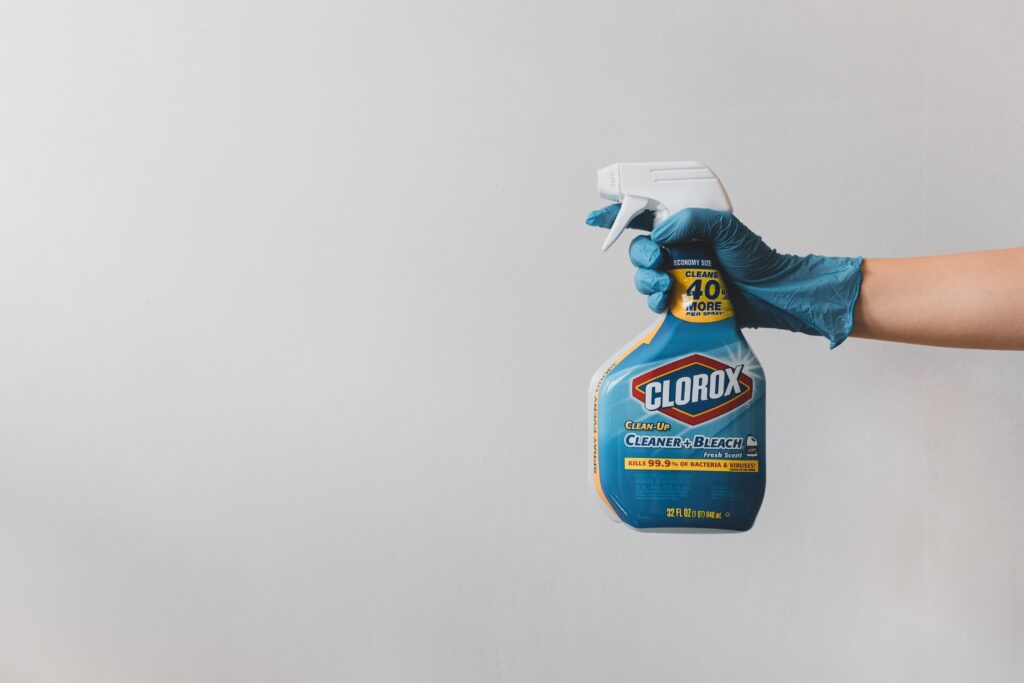
Remember, while bleach is effective for sanitizing, it should be used sparingly on wooden cutting boards to avoid damaging the wood over time. This method is particularly useful after cutting raw meat, poultry, or fish to ensure the board is thoroughly disinfected.
How to Clean a Wooden Cutting Board With Lemon
Cleaning a wooden cutting board with lemon is an excellent natural method, especially for removing odors and light stains. Here’s how to do it:
- Cut a Lemon in Half: Take a fresh lemon and cut it in half. You’ll use one half for cleaning the board.
- Scrub the Board: Rub the cut side of the lemon half over the entire surface of the wooden cutting board. The acidity of the lemon helps to break down residue and eliminate odors. For extra scrubbing power, sprinkle some coarse salt (like kosher salt) on the board before scrubbing with the lemon.
- Let It Sit: After scrubbing, let the lemon juice sit on the board for a few minutes to maximize its cleaning and deodorizing effect.
- Scrape Off the Lemon and Salt: If you used salt, scrape it off the board with a bench scraper or spatula.
- Rinse Thoroughly: Rinse the cutting board with warm water to remove all lemon juice and any loosened food particles.
- Dry the Board: Pat the board dry with a clean towel or paper towels, then let it air dry completely by standing it up in a well-ventilated area.

Lemon is particularly effective for removing garlic, onion, or fish odors from cutting boards. For regular maintenance, this method can be used periodically to keep your wooden cutting board fresh and clean. However, for deep cleaning or sanitizing, especially after cutting raw meat, you might need to use more robust cleaning methods like diluted bleach or hydrogen peroxide.
How To Remove Odors From A Wooden Cutting Board
Sometimes, wooden cutting boards can develop odors or stains, especially after cutting pungent foods. To deodorize:
- Baking Soda Method: Sprinkle baking soda over the board’s surface, scrub with a damp cloth, and rinse.
- Lemon and Salt Method: Sprinkle kosher salt over the board, then rub with a lemon half, squeezing slightly to release the juice. Let it sit for a few minutes before scraping off and rinsing.
Deep Cleaning: Tackling Tough Stains and Bacteria
For a more thorough clean, especially after cutting raw meat:
- Hydrogen Peroxide: Wipe the board with a paper towel dampened with hydrogen peroxide. This helps kill bacteria lingering on the surface.
- Chlorine Bleach Solution: If you’re dealing with tough stains or want to ensure thorough disinfection, mix a solution of one teaspoon of chlorine bleach per quart of water. Apply it to the board’s surface with a clean sponge, let it stand for a few minutes, then rinse thoroughly.

Taking Care of Your Wood Cutting Board
How To Season A Wooden Cutting Board
To prevent drying and cracking, it’s crucial to regularly oil your wood cutting board. Use food-grade mineral oil or a specialized board oil. Warm the oil slightly, then apply it with a clean cloth or paper towel, working it into the wood. Let it soak in overnight, then wipe off the excess in the morning.
Protect Your Wooden Cutting Board
Regular maintenance is essential to extend the life of your wooden cutting board. Avoid using it as a surface for pounding meat, and never put it in the dishwasher. Store it in a dry place and avoid extreme temperatures.
Suggested: How To Make Homemade DIY Cleaners
How To Repair A Damaged Wooden Cutting Board
Repairing a damaged wooden cutting board involves a few steps to restore its surface and functionality. Here’s a guide to fixing common issues like scratches, warps, and cracks:
- Sanding Down Scratches and Knife Marks:
- Start with coarse sandpaper (around 80-100 grit) to remove deep scratches and knife marks. Sand in the direction of the wood grain.
- Progress to finer grit sandpaper (150-200 grit) to smooth the surface.
- Finish with very fine sandpaper (220-320 grit) for a polished look.
- Fixing Minor Cracks and Splits:
- Clean the crack thoroughly to remove any debris or food particles.
- Use wood glue that is food-safe. Apply it inside the crack, ensuring it penetrates well.
- Clamp the board tightly together until the glue dries (usually 24 hours).
- After the glue dries, sand the area to smooth out any excess glue.
- Correcting Warping:
- For minor warping, lay the board on a flat surface. Place a damp cloth on the warped side and let it sit overnight.
- For severe warping, you might need to use heat and pressure. Lay the board flat, apply a damp towel, and then apply a hot iron over the towel for a few seconds. Apply weight on the board and leave it to cool.
- Rehydrating the Wood:
- After sanding and repairing, rehydrate the wood by applying food-grade mineral oil or a beeswax-based board cream.
- Apply the oil or cream generously, let it soak in for a few hours, then wipe off the excess.
- Regular Maintenance:
- Regularly oil the board to prevent future damage.
- Avoid exposure to extreme temperatures and moisture to prevent warping and cracking.
Remember, not all damage can be fully repaired, especially if the board has severe cracks or warping. In such cases, it might be safer and more practical to replace the board. Regular maintenance, including proper cleaning and oiling, can prevent many of these issues.
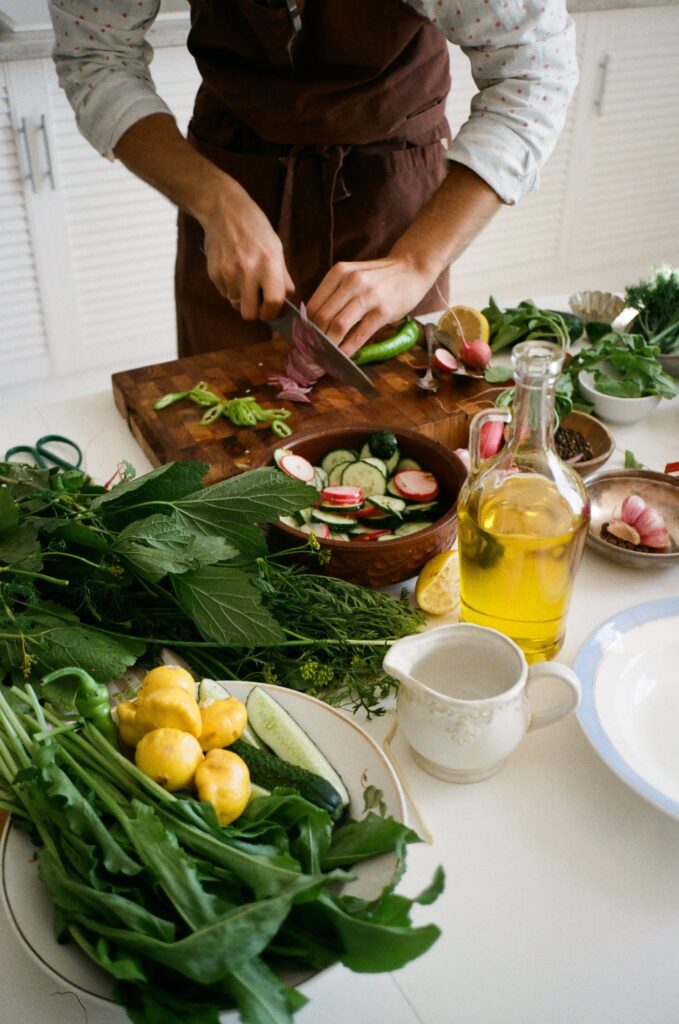
Store the Cutting Board Properly
To store a wooden cutting board properly, keep it in a dry, well-ventilated area away from extreme temperatures. Stand it upright or hang it to allow air circulation on both sides, preventing warping and mold growth. Avoid stacking heavy items on top of it to prevent warping or cracking. Proper storage ensures the longevity and hygiene of the cutting board.
In Summary
With these tips for cleaning, deodorizing, and maintaining your board, you’ll not only ensure a hygienic kitchen but also preserve the beauty and integrity of this essential kitchen item. Remember, a well-maintained wooden cutting board can be a beautiful and functional gift that lasts for years.

Christopher is a food and lifestyle expert, recipe developer and the content creator behind May Eighty Five. With years of experience in the kitchen, he also shares tips, tricks and how to’s that he has learnt over the years. Every week, he shares quick, simple and mostly healthy recipes along with some home and entertaining tips. You will find flavorful cocktails, delicious appetizers, tasty mains and some indulgent desserts. As a home decor enthusiast, he also likes to share simple DIY projects and simple tips for a beautiful home.


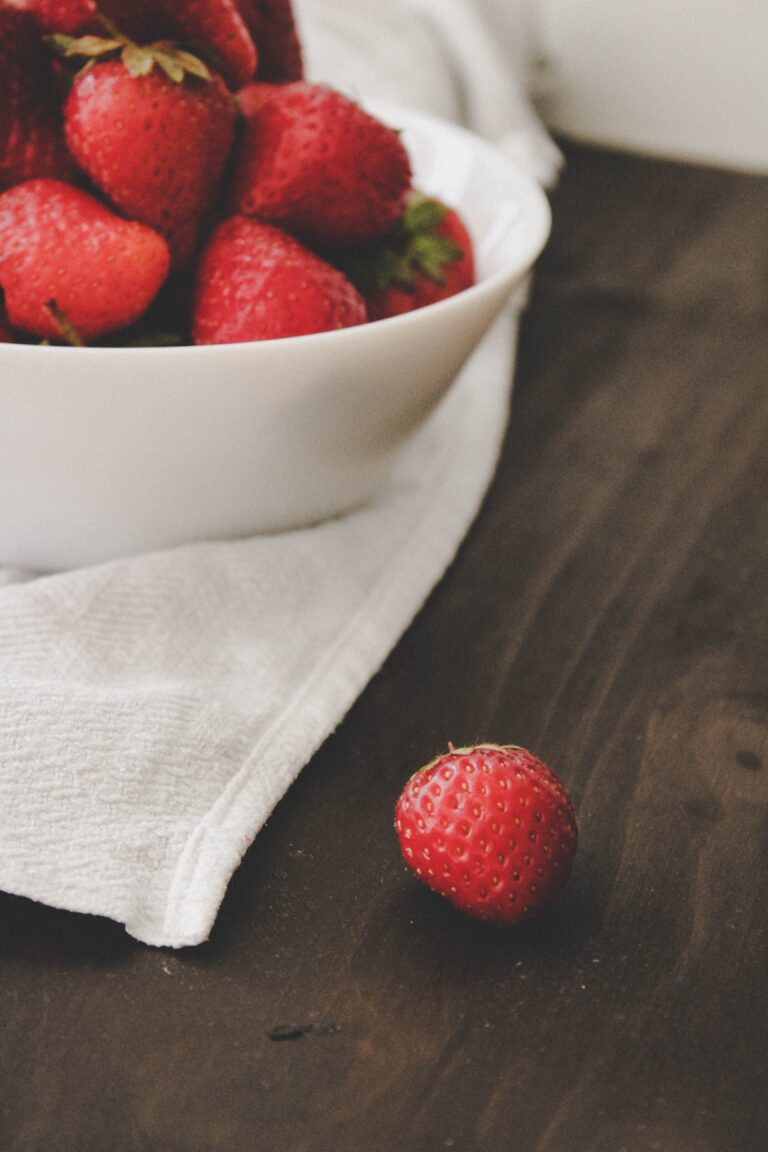
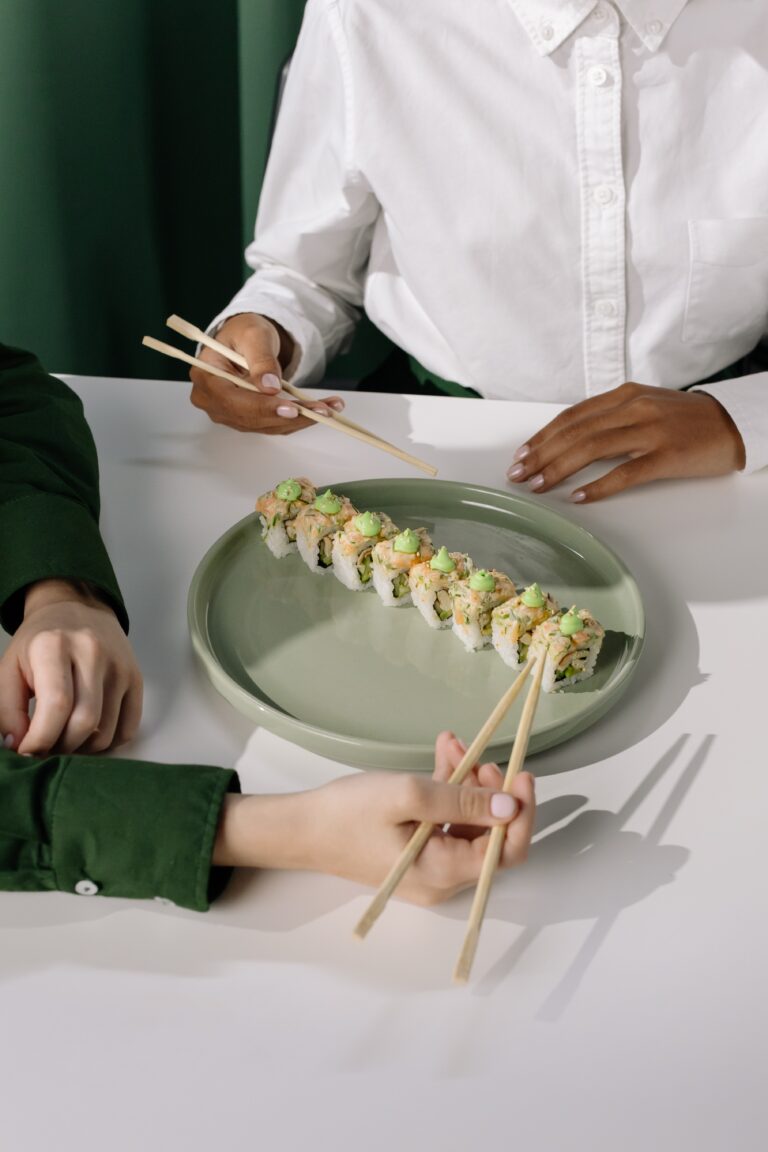
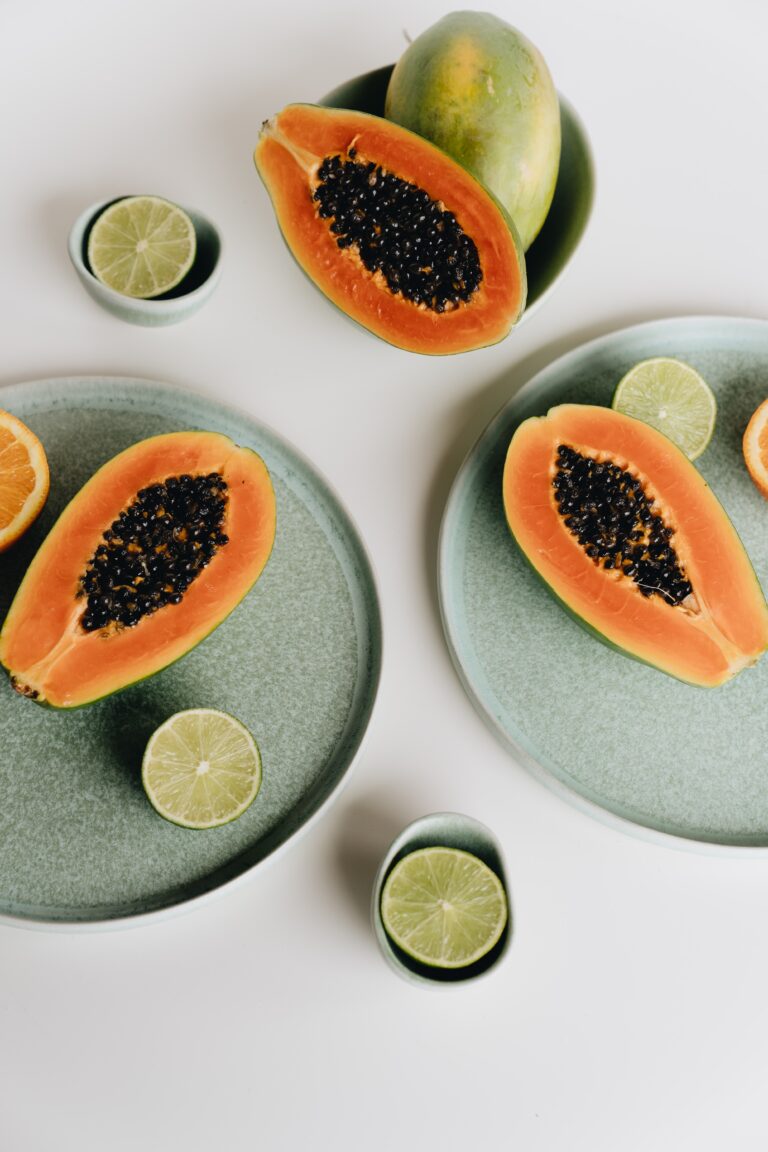
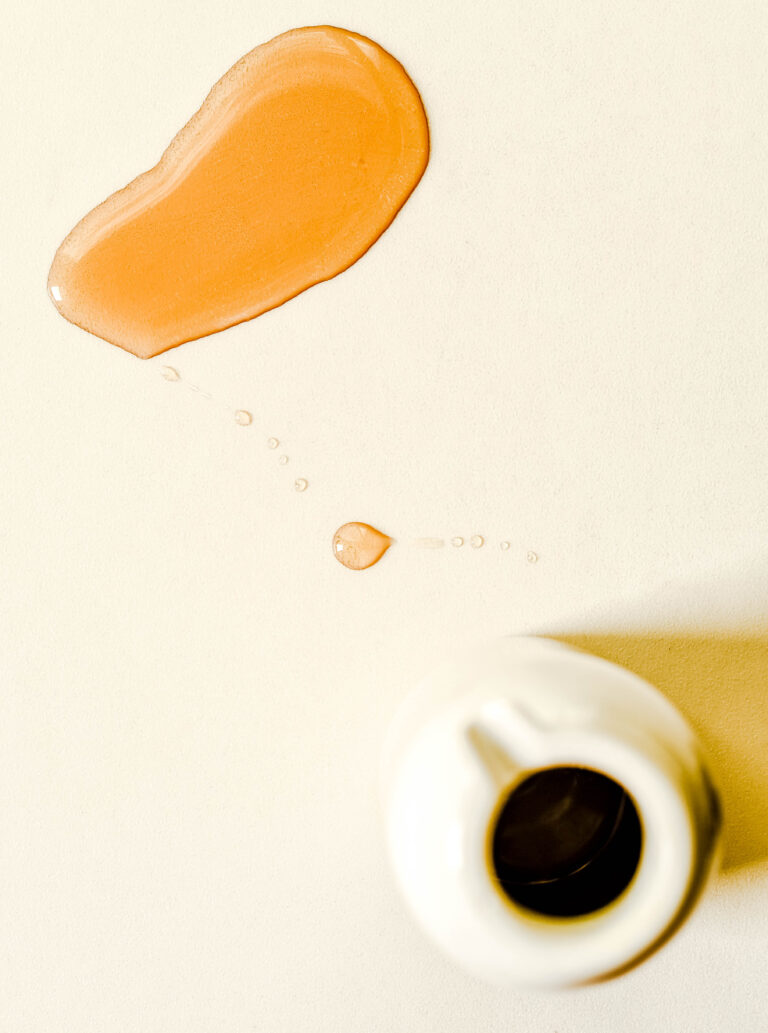
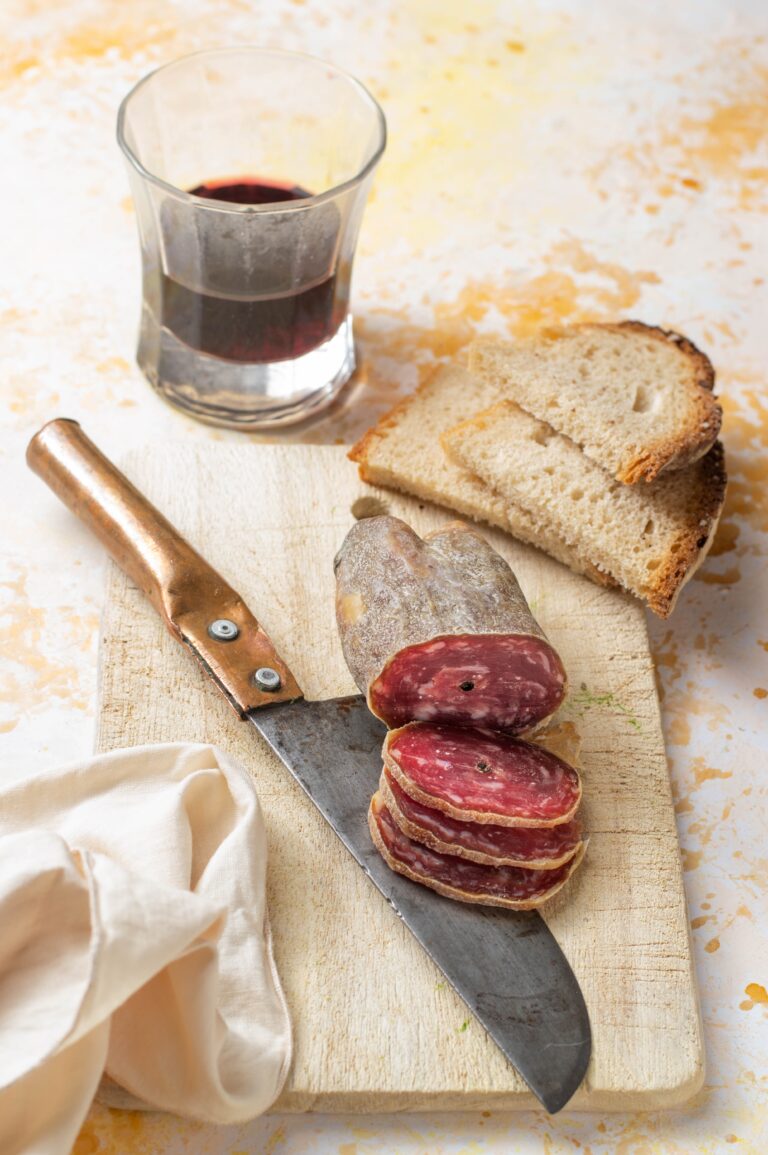
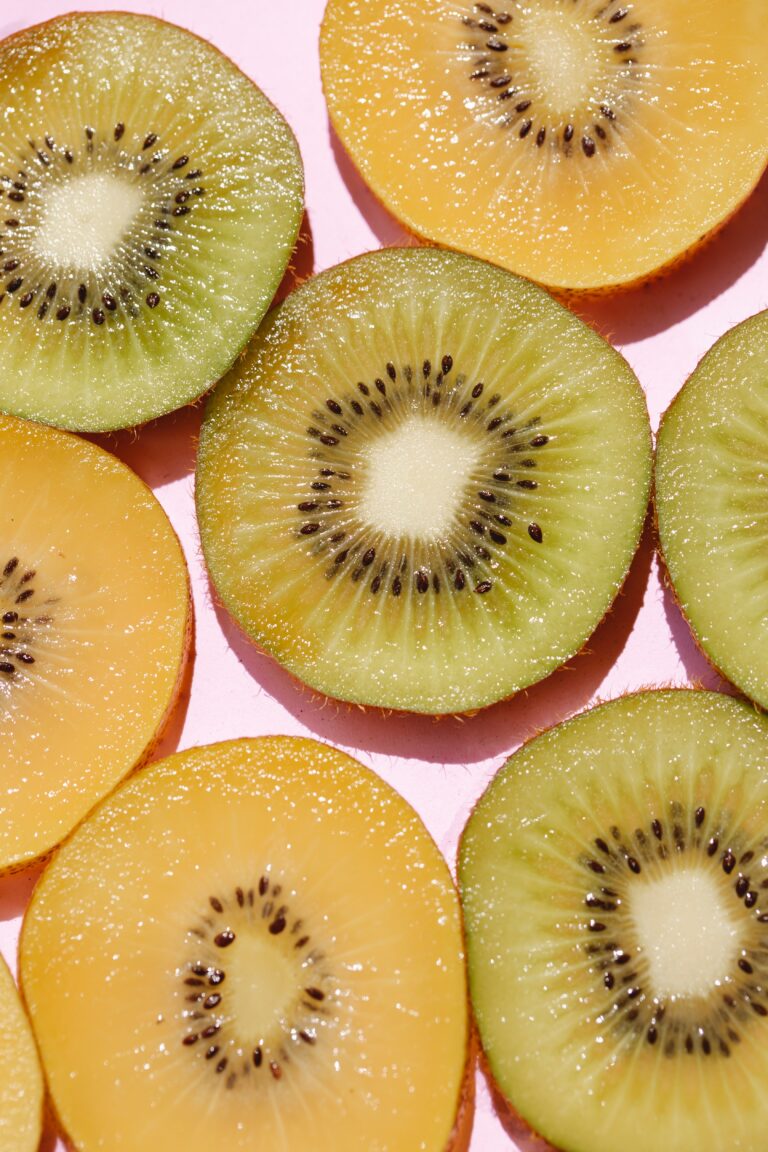
4 Comments